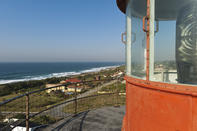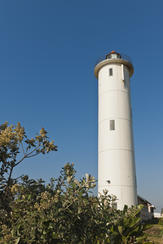Rough Seas and Skirmishes
Port Edward’s history dates back to the 19th century, when European settlers made a home for themselves on the banks of the Mtamvuma River. The area was also populated by the Zulu nation, and multiple skirmishes took place between the Zulu and settlers. One such event is encapsulated in a sightseeing spot known as Tragedy Hill.

It was so named after Zulu warriors massacred the family and followers of settler and pioneer Henry Flynn in 1831 due to a misunderstanding regarding stolen cattle. When the Zulu King found out about the massacre and the mistake made, he was horrified. He then ordered for the man who started the rumour to be executed by one of the surviving settlers.
The town grew exponentially and was laid out around 1925. It was named Port Edward in honour of the Prince of Wales, who later became King Edward VIII.
Ships Beware

The South Coast was once a very dangerous destination for international ships. Its rocky waters and unpredictable winds have seen many cargo and trading vessels sunk to the bottom of the ocean. In 552, a large Portuguese merchant ship ran aground on the shore of Port Edward.
This was the first recording of a European vessel travelling to South Africa. Then in 1878, another ship sunk around the Leisure Bay area.
The Port Edward Lighthouse, also known as North Sand Bluff Lighthouse, plays a vital role in ensuring that ships make it safely around the South Coast of the country. It was built in 1968 and stands 24 m tall. Although the lighthouse is not open to the public anymore, it is operational with two beams visible for 40 km.